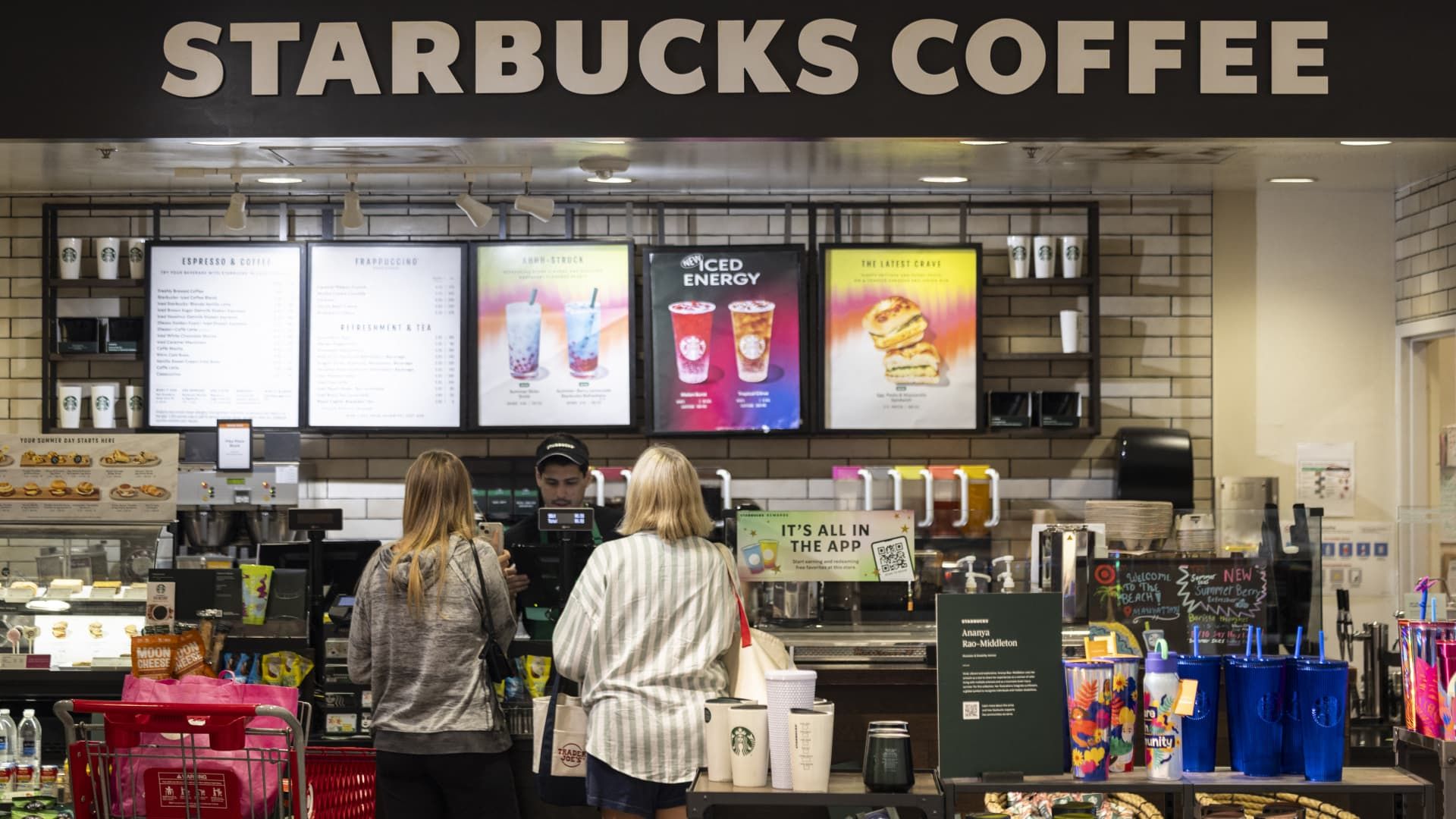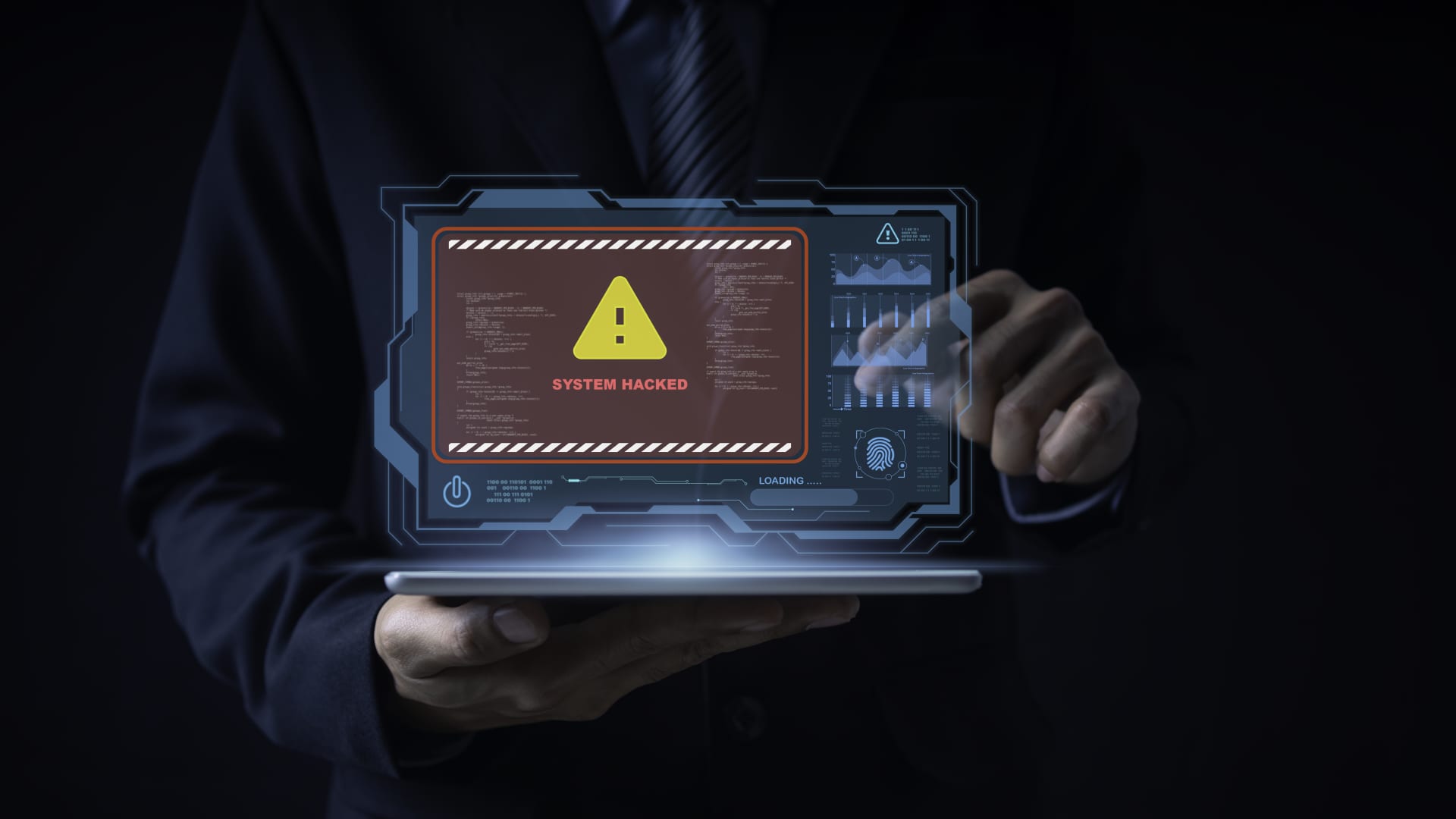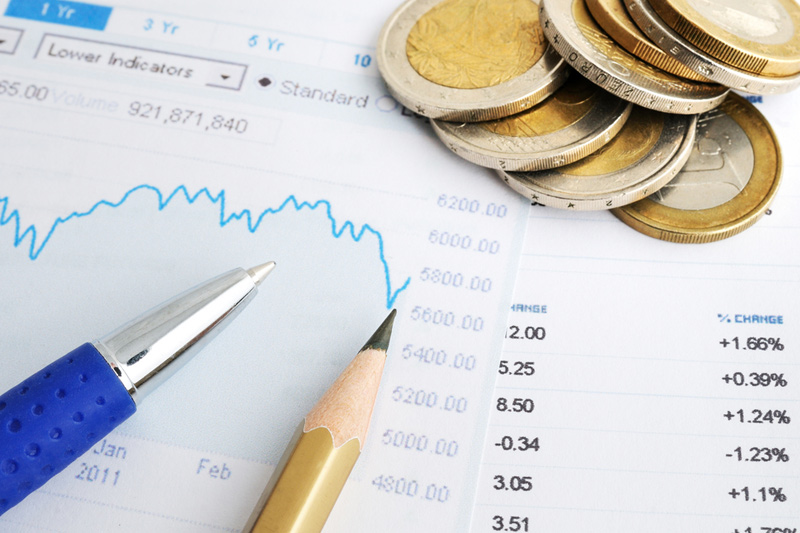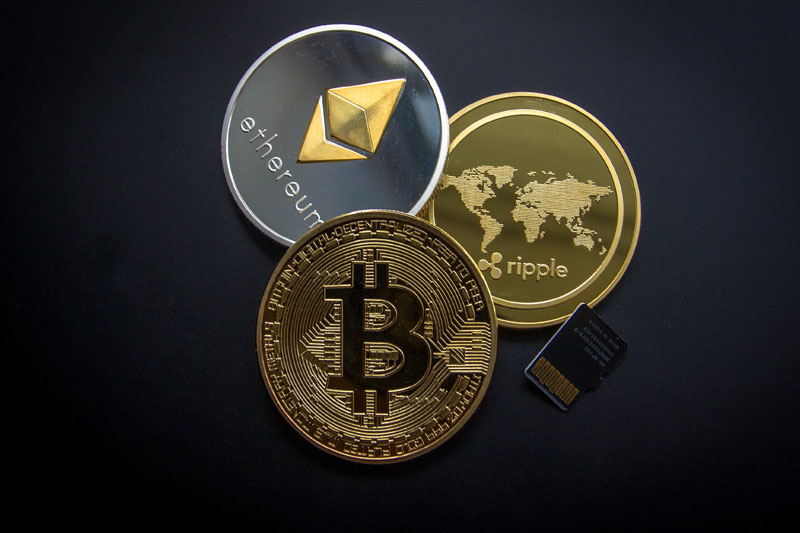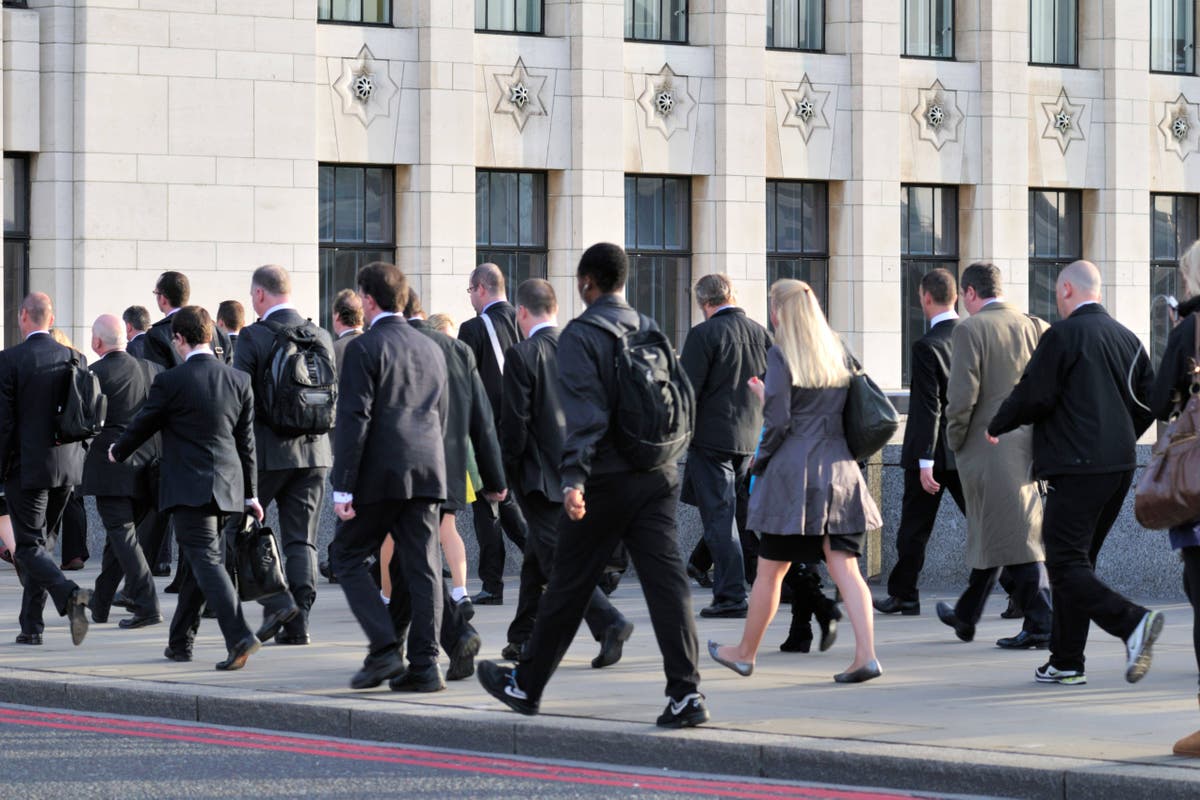Customers order a Starbucks in Manhattan Beach, California, on July 19, 2024.
Jakub porzycki | Nurphoto | Getty images
As Starbucks Its objective is to bring customers back and relieve investors with their response strategy, it is also winning its store managers with promises to add more seats within coffees and promote internally.
Since the first week of CEO Brian Niccol in the company, he has been committing to take the company “A Starbucks” to lift slow sales. That goal was in sight in the company's leadership experience, a three -day event in Las Vegas for more than 14,000 store leaders this week.
Starbucks released a new coffee called 1971 Roast, a call return to the year in which his first location opened at Pike Place in Seattle. The finalists in the first Global Starbucks Barista Global Championship referred to “Back To Starbucks” while preparing drinks for the judges. Even the Wifi password was “Backttarsarbucks!”
For investors, Niccol has already presented a several -part strategy that involves reorganizing the company's marketing strategy, improving coffee staff, solving the mobile application problems of the chain and making their locations more comfortable. The company also said goodbye to approximately 1,100 corporate workers earlier this year, saying that it was aimed at operating more efficiently and reducing layoffs.
Starbucks shares have risen almost 20% since April, and they are quoting just where they were after an increase of almost 25% the day Niccol was announced as CEO.
While Starbucks has taken important measures to recover customers and Wall Street, he is also trying to recover faith among his employees. Employees have had concerns about the hours and workloads for years, which caused a broad impulse of the Union in the United States
To excite the managers of the chain store, the launch of Starbucks executives this week focused on giving them more control. Before launching new drinks, such as a cold foam full of proteins, the company is trying them first in five stores to obtain comments from the baristas.
When the chain increases their staff this summer, managers will have more information about how many baristas they need. And next year, most North America stores will add a manager assistant to their lists.
“You are the Starbucks leaders. Your client approach is critical. Your leadership is critical. And as you return to your coffee shops, remember: coffee, community, opportunity, everything good that follows,” Niccol said Tuesday.
A change of culture
Brian Niccols, CEO of Starbucks, speaking with CNBC on October 31, 2024.
CNBC
Niccol's “Back To Starbucks” strategy focuses on the idea that the company's culture has hesitated. His leadership experience, typically held every two years, was the first since 2019, three CEO.
“We are a connection and humanity business,” Niccol said Tuesday afternoon, addressing a multitude of more than 14,000 managers. “Great people make great things happen.”
As more customers request their Lattes through the company's application, their coffees have lost their identity as a “third place” for people to pass the time and drink their drinks.
To return to the previous culture of Starbucks, the company is unrolling the previous decisions, such as eliminating the seats of its coffees. In recent years, the chain has eliminated 30,000 seats of its locations. These renovations have irritated both customers and employees; Niccol's local Starbucks manager at Newport Beach, California, even asked him to remove his store from his renewal list because he wanted to keep the seats, according to Niccol.
“We are going to put those seats again,” Niccol said, bringing a large wave of audience applause.
He obtained more applause from the audience when he discussed the plans of the chain to promote internally, since he finally adds 10,000 more locations in the United States.
Although historically approximately 60% of the Managers of Starbucks stores have been internal promotions, the company wants to raise it to 90% for its retail leadership roles. Thousands of new coffees mean 1,000 more district managers, 100 regional directors and 14 regional vice presidents for the company, and more professional mobility for the leaders of their stores.
The broader staff has been a concern for Starbucks and its employees, feeding a wave of union elections in hundreds of stores. Previous management teams have reduced the work assigned to stores, helping the profit margins at the expense of burn baristas and decelerating the service.
Under Niccol, Starbucks is changing the trend. The company is accelerating plans to implement its new green apron work model for the end of summer, because the tests have shown that it improves service times and increases traffic. As part of the model, managers will have more information about the amount of work that their store needs.
And the associated director Sara Kelly received a permanent ovation of the crowd for her announcement that most North America locations will receive a full -time and dedicated assistant store manager dedicated next year.
“For most of the time, your store is working without you, and you share that even when you are not in the store, you cannot disconnect completely, and it may seem that the weight of everything is on your shoulders … It affects everything, the experience of the partners, the customer's experience, the performance of your store,” Kelly said, addressing the store administrators at the audience.
Schultz's approval stamp
Underlining the challenges that Niccol faces to recover the company's brand, the two speakers who obtained more applause from store managers no longer actively participate in the company.
Former President Mellody Hobson scored standing ovations during her entrance and exit to the Arena stage. Hobson, cleaning the tears of the eyes, thanked Starbucks employees whom he said he always felt welcome in his stores.
He resigned from his position earlier this year, finishing a possession of approximately two decades that culminated in that he became the first African-American woman to become the independent president of a Fortune 500 company. Hobson also serves as a co-zoo co-chip in Ariel Investments.
Hobson gave his position as president of the Board to Niccol when he joined the company in September. Niccol attributed poaching Chipotle While Starbucks sought to find a leader who could change his agitator business.
“A quick conversation [with Hobson] He became something really special to me, “Niccol said.
And Hobson's old friend, Howard Schultz, also obtained feet ovations from store managers.
The former CEO of Starbucks, Howard Schultz, drinks from a cup of Starbucks while testifying before an audience of the Senate Health, Education, Labor and Pensions Committee to answer questions about compliance with the company with the Labor Law in Capitol Hill in Washington., USA, March 29, 2023.
Julia Nikhinson | Reuters
Schultz, the three -time CEO who cultivated Starbucks from a small chain to a coffee power, made a surprise appearance in the leadership experience on Wednesday morning. He marked the first time he appeared with Niccol publicly since the Board threw his selected successor, Laxman Narasimhan, and selected the then CEO of Chipotle to take the reins.
Starbucks has been plagued with questions about his succession, given Schultz's old will to return to the company's helm. But since the appointment of Niccol, industry analysts have thought that it could finally be the CEO that manages to escape from Schultz's persistent influence on the coffee giant.
Schultz's ghost remained before in the event. Niccol shared a story about being inspired to listen to Schultz talking in Yum BrandsThen Niccol employer, in 2008. The 71 -year -old president, emeritus, also appeared in video form on Tuesday afternoon to thank Hobson for his service to the company.
During his conversation with Niccol on Wednesday, Schultz signed his plan to “return to Starbucks”, saying that he made a steering wheel in his living room the first time he heard about it.
He also asked managers to bring that energy to their own Starbucks locations.
“Be faithful to coffee, be faithful to its partners,” Schultz told the audience. “And I know that we are going to get out of here … like a wave of tide and surprise and delight the world and show that all these cynics are wrong again, as we did in 1987.”

